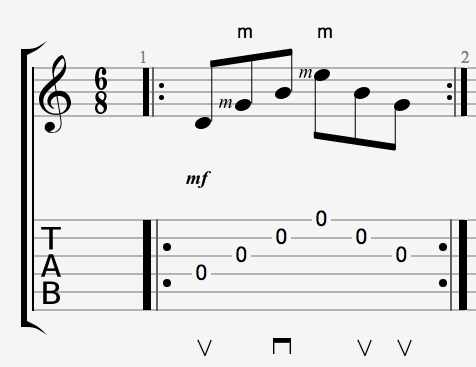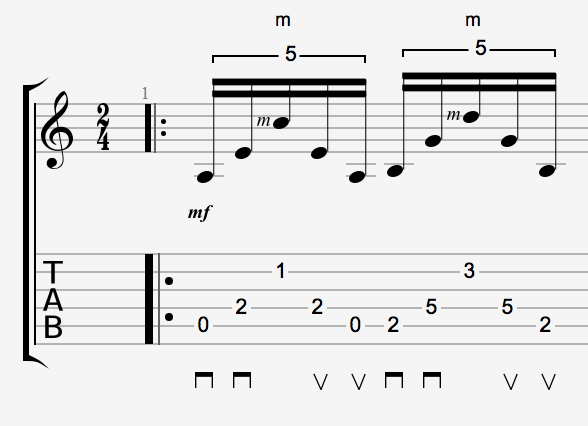Or even just heavy into hybrid, for that matter?
I’ve been digging into it a little bit lately (taking a pause from the crosspicking for lack of progress, but I’m not giving up!)
Because I was thinking about one-note-per-string figures specifically
Kind of easy to do them PIMA total classical fingerstyle but my nails aren’t strong enough to get a great strong sound doing that.
And sweeping is ok but the ‘turnarounds’ when you’re not doubling the top and bottom string are tricky (kind of requiring a ‘mid air’ slant change,) and of course with sweeping it’s harder to have a really strong, driving rhythmic feel for each note.
So swybrid brings about an interesting approach:
I’ve been playing with this and other similar figures. Just kind of interesting what’s possible, especially combining knowledge of slant changes and noting the things that I know are most difficult to me personally.
I was doing stuff with this fives motif as well which I found kind of easy to get some gas on:

Anyway, anybody spent time with these kinds of things, or even more ‘advanced’ hybrid stuff?
I always find it interesting to weigh the pros and cons of the different approaches.

